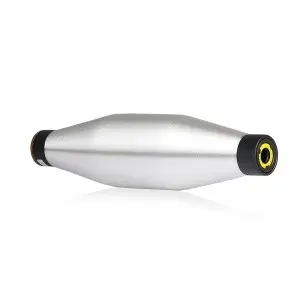Melting point range of nylon hot melt wire
In today’s global manufacturing industry, nylon hot melt wire, as a high-performance engineering material, is widely used in many fields such as textiles, automobiles, and electronics. Its melting point range is a key parameter that determines its application field and processing conditions.
1. Melting point range of nylon hot melt wire
The melting point range of nylon hot melt wire is usually between 180℃ – 230℃. This range varies depending on the type of nylon (such as nylon 6, nylon 66, etc.) and the degree of crystallinity. Specifically:
(I) Different nylon types
Nylon 6: The melting point is usually between 210℃ – 220℃.
Nylon 66: The melting point is generally between 250℃ – 260℃.
Nylon 12: The melting point is lower, about 175℃ – 185℃.
(II) The influence of crystallinity
The higher the crystallinity, the higher the melting point of nylon hot melt wire. High crystallinity makes the nylon molecular chain more regular and compact, thereby enhancing the intermolecular force and increasing the melting point.
2. The influence of melting point range on processing
(I) Processing temperature window
The melting point of nylon hot melt wire determines the temperature range during its processing. During the hot melt bonding process, the nylon hot melt wire must be heated above the melting point to fully melt it to achieve good fluidity and infiltration of the adherend. For example, in 3D printing, the melting point of nylon hot melt wire is 180℃ – 255℃, and the nozzle temperature needs to be precisely controlled to ensure that the nylon hot melt wire can be melted evenly and accurately formed.
(II) Forming speed
Nylon hot melt wire with a lower melting point is easier to melt under the same heating conditions, and can complete the molding process faster, improving production efficiency. However, too low a melting point may result in poor dimensional stability or insufficient mechanical properties of the molded product.
3. The influence of melting point range on application
(I) Adaptability to different environments
Different application scenarios have different requirements for the melting point of nylon hot melt wire. Products used in low temperature environments, such as repairs for outdoor winter products, may require nylon hot melts with relatively low melting points. Components that work in high temperature environments, such as fixing parts in the engine compartment of a car, require nylon hot melts with high melting points.
(II) Compatibility with other materials
The melting point of nylon hot melts also needs to match the performance of the bonded material. If the bonded material is a high-temperature resistant metal or ceramic, then a nylon hot melt with a high melting point needs to be selected. On the contrary, if the bonded material is a plastic or composite material that is more sensitive to temperature, a nylon hot melt with a moderate melting point needs to be selected.
4. Precautions for international procurement of nylon hot melts
(I) Select the right supplier
Supplier reputation: Select a reputable supplier to ensure the quality of the material and after-sales service.
Technical support: The supplier should provide comprehensive technical support, including material selection, processing guidance and application consultation.
Reasonable price: Select a supplier with a reasonable price while ensuring the quality of the material.
(II) Material selection
Processing requirements: Select the appropriate type of nylon hot melt according to the processing requirements. For example, nylon 6 is suitable for processing at lower temperatures, while nylon 66 is suitable for high-temperature environments.
Application areas: Select the appropriate melting point range according to the application area. For example, automobile manufacturing requires nylon hot melt wire with a high melting point, while the textile industry can choose nylon hot melt wire with a lower melting point.
Performance requirements: Consider the mechanical properties, chemical stability and weather resistance of nylon hot melt wire to meet the needs of specific applications.
(III) Quality control
Melting point test: Ensure that suppliers provide accurate melting point test reports to verify the melting point range of the material.
Batch consistency: Suppliers are required to ensure that the melting point range of different batches of materials is consistent to ensure the stability of processing and application.
Storage conditions: Nylon hot melt wire is sensitive to humidity and needs to be stored in a dry environment to prevent the material from absorbing moisture and affecting performance.
5. Summary
The melting point range of nylon hot melt wire is an important physical property and has a key impact on its processing and application. Understanding and mastering its melting point range will help international wholesale buyers choose appropriate processing technology and application solutions. At the same time, with the continuous advancement of technology and the expansion of application fields, the melting point range and application fields of nylon hot melt wire will continue to expand.
Post time: Jul-23-2025

